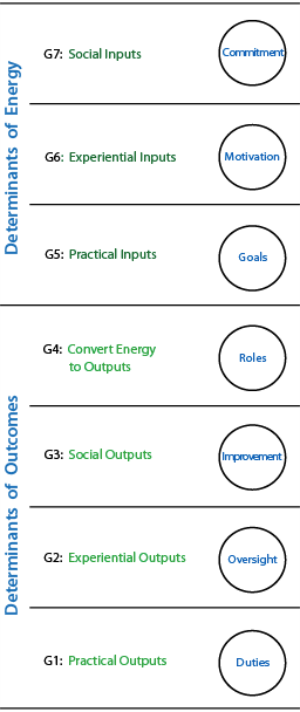Energy for Outcomes

Internal Duality
is about people providing inputs requiring personal energy so as to produce outputs expected to lead to valued outcomes. involves both inputs and outputs.
It was evident in the previous framework that the lower 4 groupings () provided organizational outputs around which must adjust itself. By contrast, the upper 3 groupings () are the staff inputs that reflect and affect the degree and intensity of .
7 Groupings/Levels (shown in the diagram) therefore manifest an internal duality, proposed as energy-inputs v outcomes-outputs.
from this perspective is not about doctrines or exhortations or morality, but is based in a plain recognition of . The justification for having an organization at all is the same justification for paying attention to staff participation and socio-emotional states.
Personal Concerns
![]() Remember: Each of these Level/Centres contains a lot! To remind you what is inside them, review the originating framework.
Remember: Each of these Level/Centres contains a lot! To remind you what is inside them, review the originating framework.
There are different personal concerns and they revolve around the Centre at the centre: G4-. These must be designed to enable the conversion of to . Above and below it, there seems to be a standard progression from top to bottom:
• Social or group/value-based.
• Experiential or person/intuition-based.
• Practical or empirically/externally-based.
As a result, the pattern is:
G7: social via .
G3: social via .
G2: experiential via .
G6: experiential via .
G1: practical via .
G5: practical via
- Given this conception of what requires of staff, the next step is to identify the tension that spontaneously comes into play when participation actually occurs.
Originally posted: 23-May-2014.